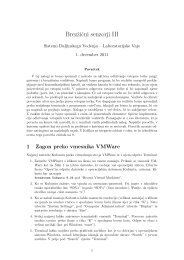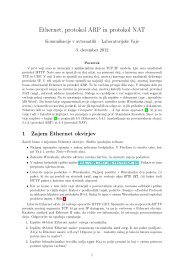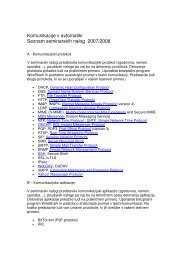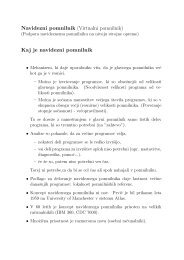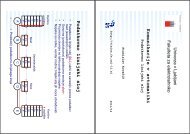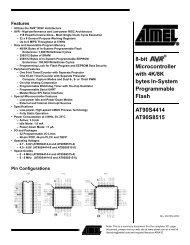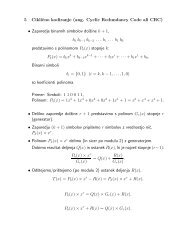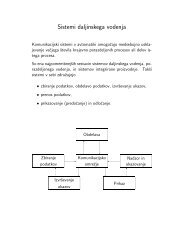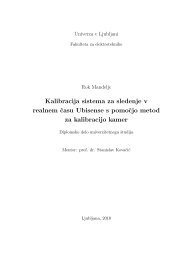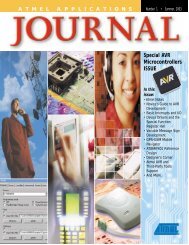AVR Instruction Set Nomenclature: Status Register (SREG ...
AVR Instruction Set Nomenclature: Status Register (SREG ...
AVR Instruction Set Nomenclature: Status Register (SREG ...
You also want an ePaper? Increase the reach of your titles
YUMPU automatically turns print PDFs into web optimized ePapers that Google loves.
MUL - Multiply Unsigned<br />
Description:<br />
This instruction performs 8-bit × 8-bit → 16-bit unsigned multiplication.<br />
The multiplicand Rd and the multiplier Rr are two registers containing unsigned numbers. The 16-bit unsigned product is<br />
placed in R1 (high byte) and R0 (low byte). Note that if the multiplicand or the multiplier is selected from R0 or R1 the result<br />
will overwrite those after multiplication.<br />
Operation:<br />
(i) R1:R0 ← Rd × Rr (unsigned ← unsigned × unsigned)<br />
Syntax: Operands: Program Counter:<br />
(i) MUL Rd,Rr 0 ≤ d ≤ 31, 0 ≤ r ≤ 31 PC ← PC + 1<br />
84<br />
Rd Rr R1 R0<br />
Multiplicand × Multiplier → Product High Product Low<br />
8 8 16<br />
16-bit Opcode:<br />
1001 11rd dddd rrrr<br />
<strong>Status</strong> <strong>Register</strong> (<strong>SREG</strong>) and Boolean Formulae:<br />
I T H S V N Z C<br />
- - - - - - ⇔ ⇔<br />
C: R15<br />
<strong>Set</strong> if bit 15 of the result is set; cleared otherwise.<br />
Z: R15 •R14 •R13 •R12 •R11 •R10 •R9 •R8 •R7• R6• R5• R4• R3• R2 •R1• R0<br />
<strong>Set</strong> if the result is $0000; cleared otherwise.<br />
R (Result) equals R1,R0 after the operation.<br />
Example:<br />
mul r5,r4 ; Multiply unsigned r5 and r4<br />
movw r4,r0 ; Copy result back in r5:r4<br />
Words: 1 (2 bytes)<br />
Cycles: 2<br />
<strong>Instruction</strong> <strong>Set</strong>




